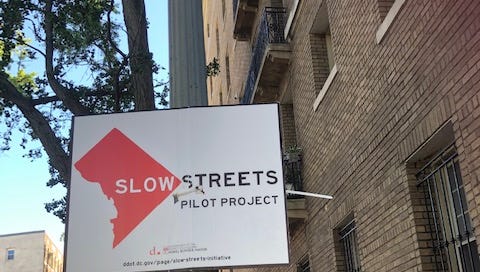'Slow streets' need to be the way we live, a lot faster
The “Slow Streets” signs in Washington, D.C. are the last vestiges of an ultimately doomed attempt to reimagine urban space. The experiment, which D.C. concluded mid-May, was also rolled out in Oakland, Minneapolis and New York City.
The end of “Slow Streets” in D.C. offers a sense of bad implementation of a good idea. As the District Department of Transportation acknowledged, it was a “pandemic initiative” that garnered “mixed reviews”.
The idea was to create safer neighbourhood streets for families to walk and bike, while staying six feet apart for social distancing. Some 22 miles of “slow streets” were installed in seven D.C. wards last summer. The pilot project lowered the speed limit to 15 miles per hour and put out barricades that instructed “local traffic only”. The idea, said the transport department, “had community support”. However, its implementation and enforcement left a great deal to be desired. The signs were often moved, hit, or ignored by driv…
Keep reading with a 7-day free trial
Subscribe to This Week, Those Books to keep reading this post and get 7 days of free access to the full post archives.





